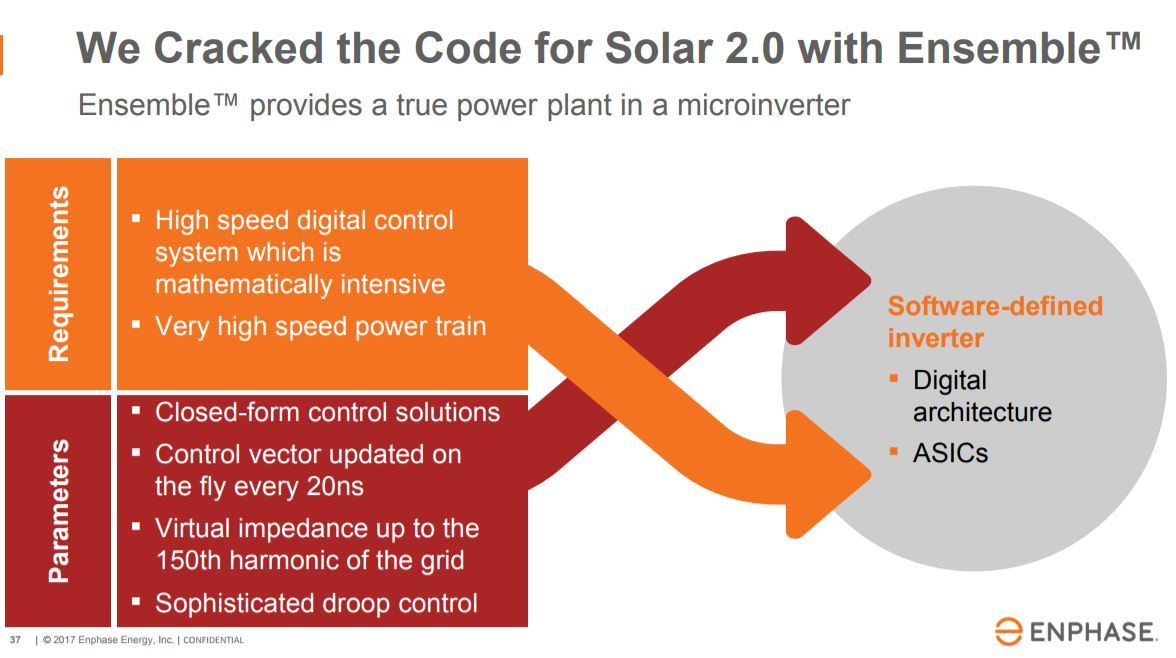ArthurEld
Solar Wizard
It's going to take me a while to figure everything out.
Fun stuff
Fun stuff
"If you have AC coupled solar panels and a generator then you must use the TOU setting to prevent the generator from being called for during the daytime or else damage will occur. Simply uncheck the “charge” checkbox for time slots that may have PV production. v. If Off-Grid, connect the generator output to the “Grid” input in the Sol-Ark and select"
Just to keep the record straight, Electric Car Parts Company is selling Deye's. I'm still getting a SolArk.For reference, I looked into this for a while prior to buying the sol-ark. They will not send stuff to the USA because of their contracts with Sol-ark. If you ask for any technical documentation, they immediately say to go to sol-ark. I even tried using on of my vendors in China to buy them from Deye and then send to me and that route was not feasible.


Would Enphase IQ8 make power available when the grid is down?That's if you only want the micro inverters for grid tie net metering, but not available while off-grid.
Of course it can't without disconnecting from the grid.Would Enphase IQ8 make power available when the grid is down?


 www.solarpowerworldonline.com
www.solarpowerworldonline.com


We need to hear from someone who has Enphase micro inverters on a Skybox or similar.
With battery full charged, PV array capable of 6kW but loads only drawing 3kW so power is curtailed.
Does Enphase deliver 3kW continuously? Or does it drop offline every 5 minutes as required by code?
Maybe @GXMnow can tell us.
I went with all SMA because it was suppose to work.
Found my existing SWR2500U weren't compatible.
Bought 10000TLUS because it was documented as compatible. I discovered it wasn't, SMA concurred but gave a work-around that is satisfactory.
90 per cent of the time my system is grid tied so any solar is sold to the grid instead of being curtailed. My micros and my GT SolarEdge are AC coupled to my Skybox so that in a grid down situation I can use that power to charge my batteries.Or @Ampster , think you also have Enphase performing frequency-watts.
Will it deliver a portion of full PV power all day long? Or does it disconnect after 5 minutes, as I think the grid-tie codes require?
If so, that would cycle batteries every few minutes, recharging while Enphase is on-line, discharging each time they drop off.
If I look at this from the standpoint of protecting the grid I can see that happening and similarly when the grid frequency stabilizes that all of the GT inverters should come up somewhat randomly to avoid shocking the grid.So I see this as saying all "Rule 21" or "UL 1741SA" or whatever compliant inverters, when used with frequency-watts curtailment of output on a battery inverter, would always disconnect after 5 minutes, reconnect later, and repeat.
That would be less than perfectly clean and elegant for off-grid or backup systems. A mechanism to defeat it is desirable when disconnected from grid. When vendors tell us how well these things work, I suspect they're just marketing hardware.
Growatt can't backfeed unlike sol ark. So if your batteries are full you can get paid from utility company. Sol ark can send solar power to the main panel while wired up to sub panel by the way as Grid power hook up is bidirectional. Sol ark has ct sensors which can match in coming power from the meter to cancel out or less then but never greater then meaning you don't need a net meter Agreement with your eletrical company and they will never know unless tipped off. Growat inverter can't do this .
I watched your video recently, before I discovered this thread. Thanks for sharing the information, I learned some stuff from it. Just wanted to say thanks for helping ramp-up. Crap… the things that I just don’t know.
At this point, I got the unit powered up with one of those LEAF battery packs from Bigbattery, but certainly not what I plan to run the unit on!!! The BMS tripped out on too high of a current 3 times while trying to charge the caps in the sol-ark...Let alone that it's way undersized for running any sort of power levels that the sol-ark is capable of.
Either way, got the unit powered up and tested, because I wanted to make sure that before I went and shut everything down and took out a perfectly good inverter, that I was covered and the installation would go flawlessly. After digging through the manual for a bit, I found a few great takeaways:
I am already planning to have amperage-reading current transformers on both the output of the Sol-ark and on the power going from my generator to the sol-ark...So with that combined with my battery voltage reading and shunts on the input, I can accurately use my PLC system to compare the specified efficiency of the unit to the actual values. My PLC is highly accurate even at low amperage readings...I trust it far more than a clamp meter.
- The new version of the 12k is designed to be outdoor rated, but not yet approved as 3R, which means an inspector could write you up for using a unit that is indoor rated outdoors, but in the manual it says clearly that the approval for outdoor rating is pending and that using the unit outdoors would not void the manufacturers warranty.
- I am obviously in an off-grid situation, with a 14KW generator. In the manual, they say if your generator is larger than 10KW, and you are in an off-grid application, to use the "GRID" terminals for the generator. My concern here was that the generator support mode wouldn't work, which in fact it does. All you need to do here is use the CT's provided with the unit on the generator power feed...The Sol-Ark treats the generator as "GRID" and conveniently the sol-ark can do GRID SUPPORT PEAK SHAVING!!! The more I read about this thing the more excited I am to become a dealer for Sol-ark some time in the future....Hopefully things can fall into place.
- At idle, the panel on the unit was showing .5 amps draw on the battery, or approximately 30 watts, which is around 1/2 of their spec'd idle draw. After using a clamp meter, I got a bit over an amp, so I will need to do further testing once the unit is installed to determine the accuracy of the sensors within the unit.
More to come soon.


